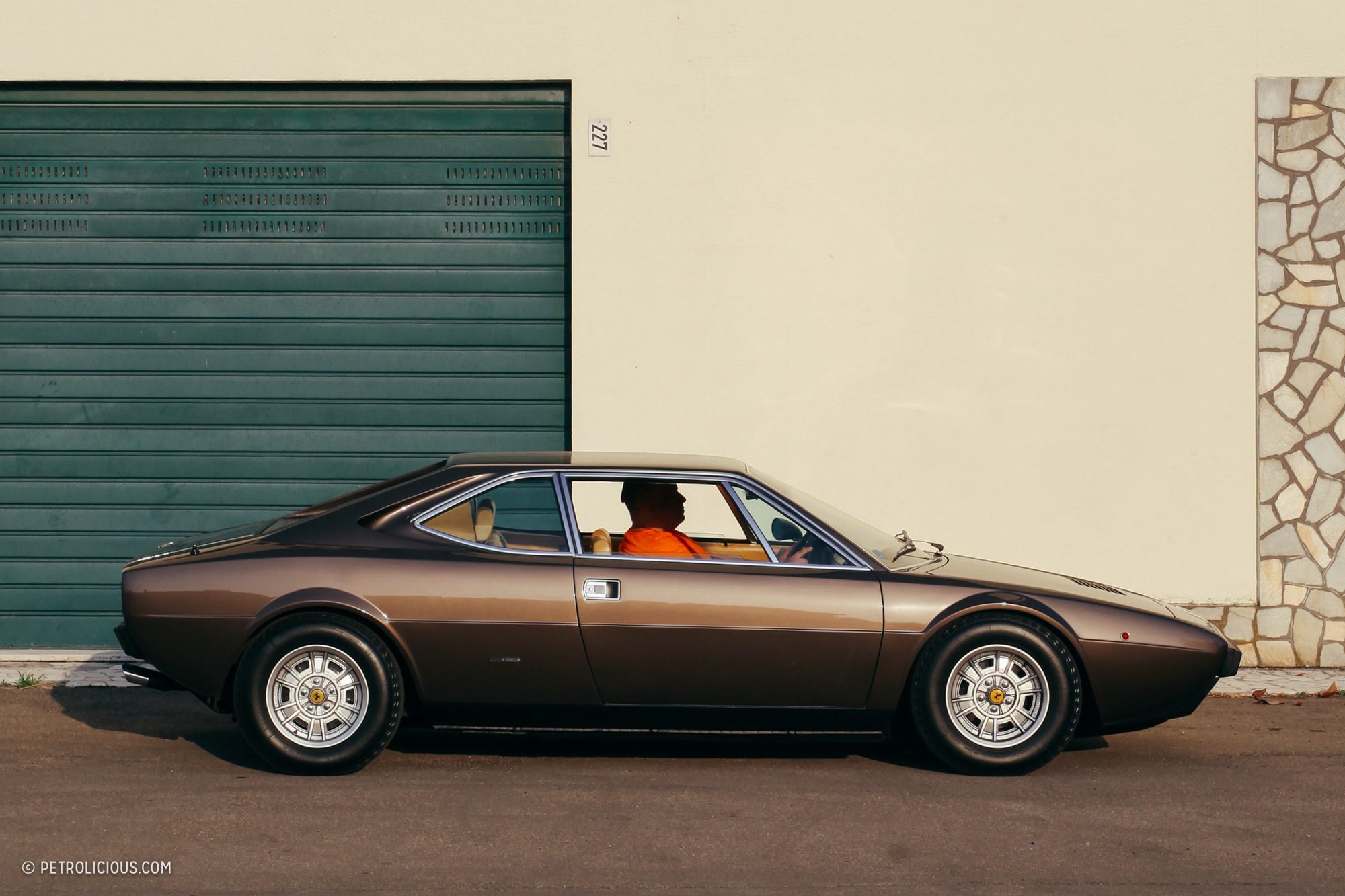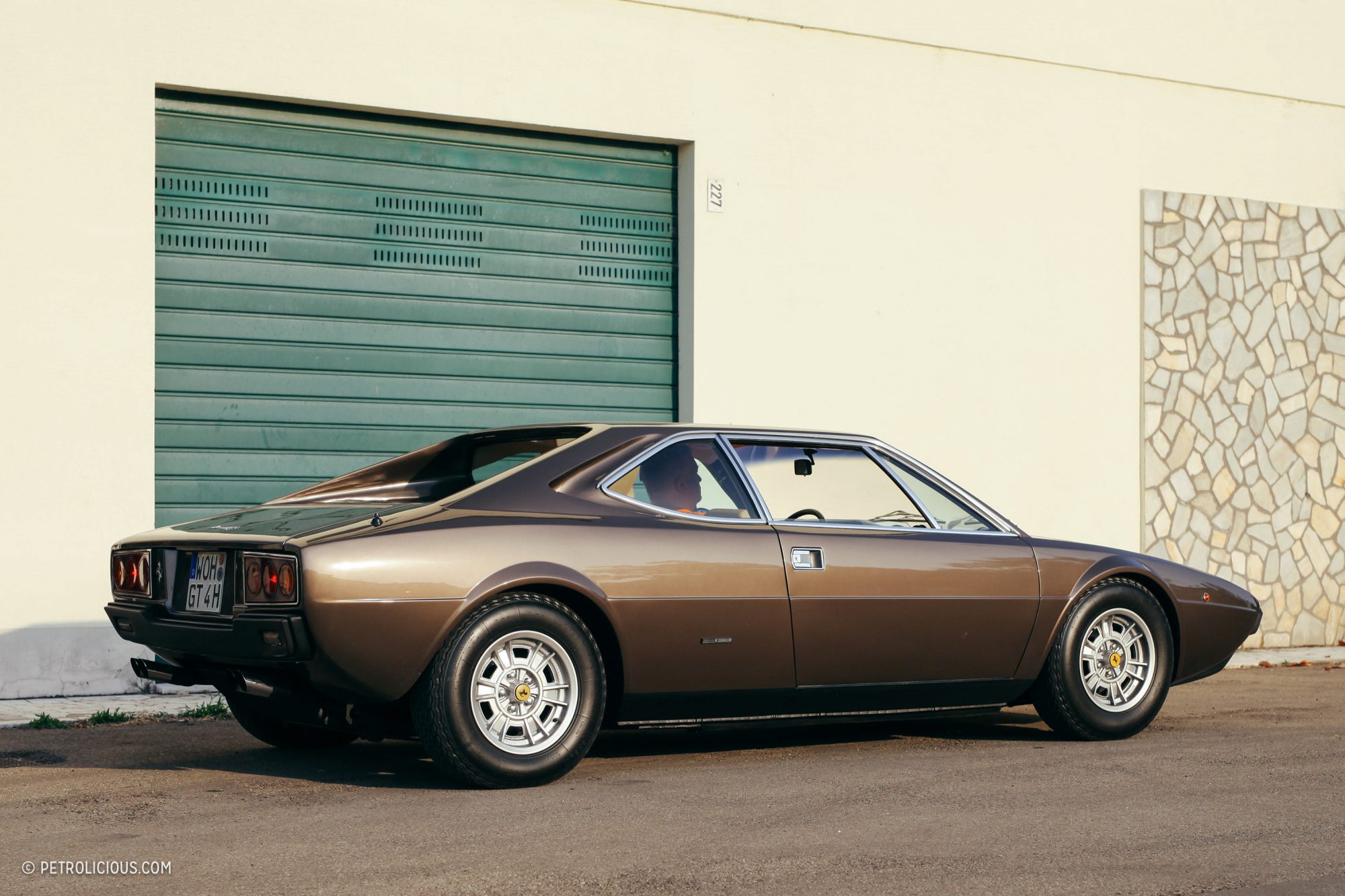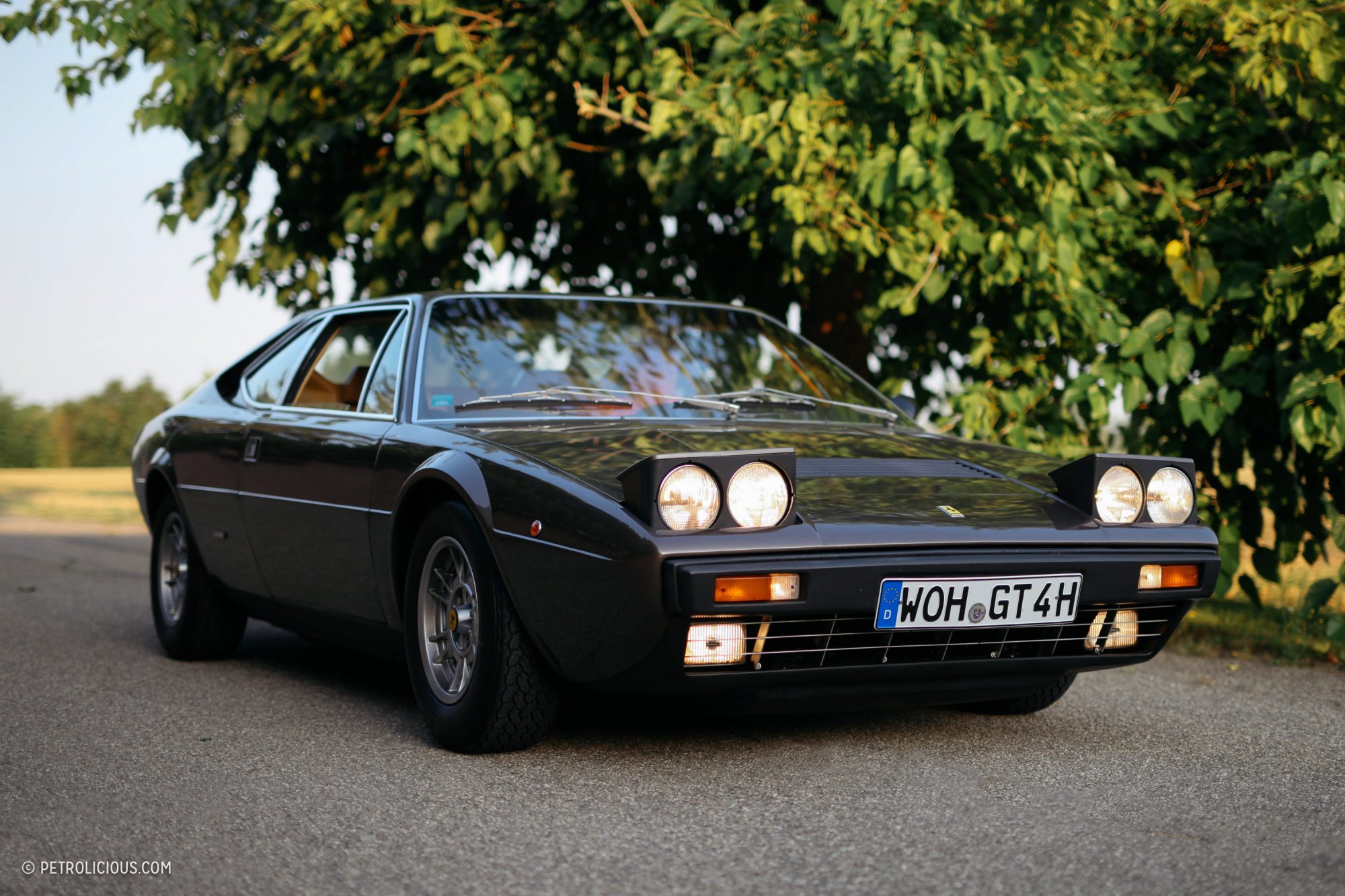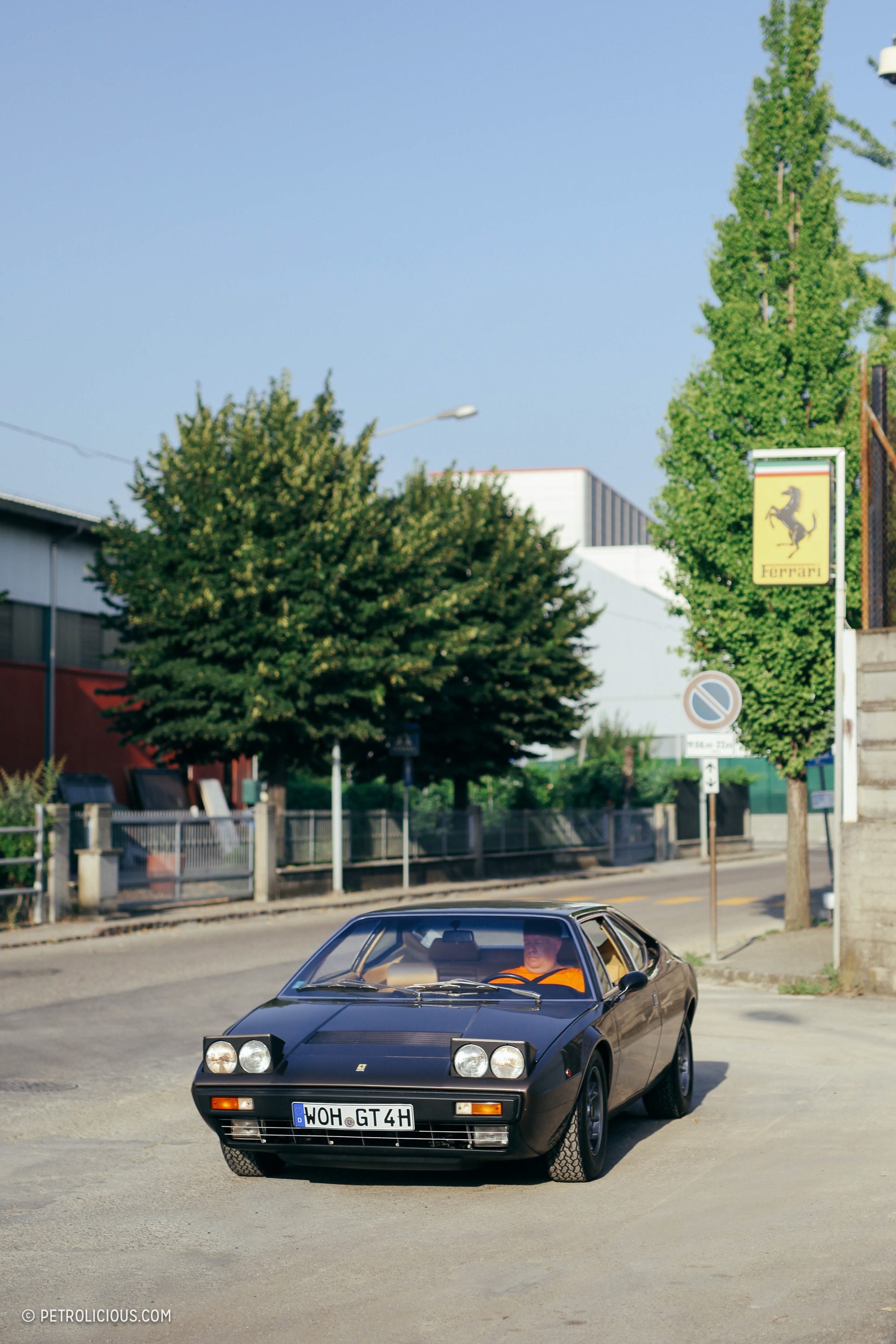
Story by Laura Ferriccioli
Photography by Marco Annunziata
Angles. Out of the blue. A cold shower. In 1973 the 308 GT4 was revealed to an unsuspecting world, totally changing the design language of the Dino 206 and 246. No more smooth and curvaceous lines, no more two-seaters like in all the previous derivatives, but a spectacularly squared-off 2+2 on a chassis of only 2.55m in length (about 8.37ft). Only 21cm longer than the previous 246 GT and GTS, the Dino 308 GT4 was the first Bertone-penned Ferrari, after a long line of Pininfarina creations.
The result was a perfect wedge of ’70s style, especially in this particular color so typical of the decade: brown. “Marrone metallizzato 106-M-73,” to be precise. “Design has always been the most important aspect for me when judging a car,” says the owner of this one, Andreas Birner. “In the case of the Dino 308 GT4, it was anything but love at the first sight. When I was very young, I didn’t like it at all. I had that ‘It’s not a real Ferrari!’ sort of attitude. The majority of the Ferraristi at the time considered the GT4 to be the ugly duckling of the family. That’s why it had been the least expensive used and later classic Ferrari model in the market,” he explains.
German, 43 years old, he is a Ferrari historian and broker. Andreas is convinced that “Every style has its period, and they tend to repeat. After the ’70s, the mainstream became more rounded again. Then, since the early 2010s, car design has looked back to more angular shapes, and in my opinion, this gave the GT4 a newly developed kitsch appeal among classic car enthusiasts.” In fact, 15-20 years ago you could pick up a reasonable-condition GT4 in Europe for about $12 or 13,000, a significantly lower sum than needed today.
Andreas isn’t alone in his sentiments, and the Dino 308 GT4 is one of the most underrated Ferraris of the ’70s and ’80s, according to market experts. “Its handling is simply phenomenal, like that of a go-kart!” he enthuses, “But at the same time, it offers so much comfort, The perception of interior space that you get while sitting at the wheel is amazing, and the car is even comfortable for a big guy like me.”
The model also solved the problem of luggage, which had always been tricky in mid-engined cars. The rear legroom for passengers in the 308 GT4 is not particularly large, but managing to combine it with a separate load compartment at the rear—and with more space for baggage under the bonnet—the great Italian designer Marcello Gandini succeeded in meeting a significant challenge. Another turning point represented by the car was that it marked the beginning of Ferrari’s production of successful V8-engined road cars. The 90-degree engine with four Weber 40 DCNF carburetors in the middle of the V superseded the preceding Dino’s V6. Its capacity is 2926 cc.
“I bought chassis number 12738 in Como, in 2013, from a couple who inherited the Dino 308 GT4 from a parent in 1995,” Andreas recalls. “The advert on a German online platform just showed one single photo of the car’s ASI (Automotoclub Storico d’Italia) certification. Due to this very modest exposure, it had been up for sale for a long time before I decided to go for it.”
Andreas had never driven a 308 GT4 before and “It turned out to be a highly original example that was only needing some TLC due to its long slumber in a garage for many years.” Being an early series II built in 1976, this car is Ferrari branded rather than Dino-only, as the year prior Maranello had finally decided to substitute the Dino’s logo with the Prancing Horse. The Cavallino was more appreciated by customers, and so that became then the standard designation until the end of production in 1980.
Andreas’s example is also one of a small number of 308 GT4s that were produced with black fiberglass bumpers instead of the standard chromed versions. “This difference approximately involved chassis numbers from 12,400 up to 13,000 because of a temporary shortage of chrome in Italy at the time,” the Kassel-based enthusiast explains.
The car isn’t his first Ferrari, but he is particularly happy with this purchase describing the car as “pure fun” to actually use in addition to appreciating its historical significance. He can be found driving it often, and soon he’ll take it on the the 700km journey from central Germany to St. Moritz, Switzerland, to take part in the famous Italian classic car gathering Passione Engadina, scheduled for later in August. Not only that, every year he used to attend the Dino’s annual tours by Matthias Bartz—author of the book Dino Compendium—as a guest and photographer. The event is organized on behalf of the Ferrari Club Deutschland, and of course earlier this year in June, Andreas was sure to attend the birthday celebrations for the 50th anniversary of Dino road cars in Maranello with his GT4—a place where unlike the rest of the world, everyone recognizes the wedge.
































